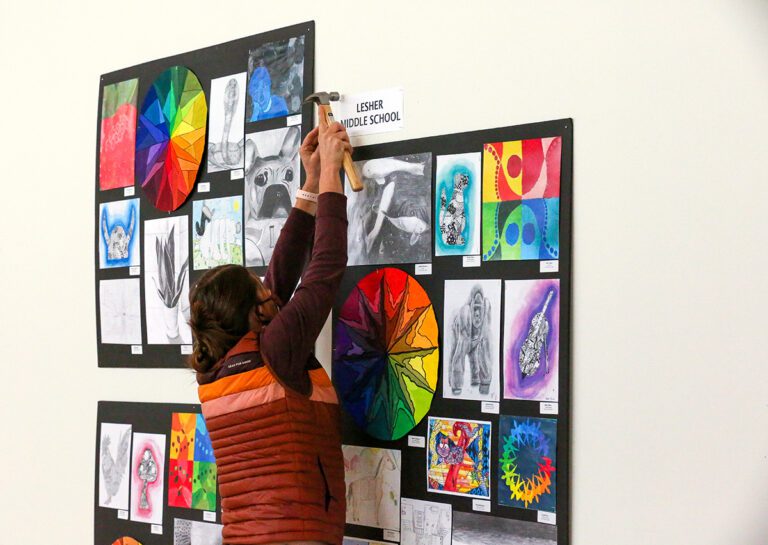It’s no secret that being an art educator requires a lot of hard work. At the same time, we know it’s worth it. Each day we get to put on our artsy aprons and use our superpowers to get creative with our students.
We see the value of making. We know the importance of teaching the WHOLE child. We realize art isn’t a “special” part of the day, but an essential one.
What we do every day in the art room is awesome, but sometimes unappreciated.
When we find paper tossed carelessly on the floor, overhear others refer to us as the “for fun” class, or have administrators ask us to use our prep time to make hallway posters, we may feel our vocation doesn’t hold as much value as others in the school.
Let’s be honest. Every once in a while it sure would tickle our art teacher feathers if we heard a simple, “THANK YOU!”

A thank you for managing more materials and students than anyone else in the building realizes.
A thank you for displaying artwork that makes every child feel like an artist.
A thank you for staying fresh with our professional development.
A thank you for knowing the difference between “crafting” and artmaking.
A thank you for nurturing the creativity of the next generation of learners and leaders.
A thank you for saying, “Yes!” to collaborative opportunities.
A thank you for planning lessons that reach every learner.
A thank you for engaging the most challenging of students.
A thank you for sitting through meetings that have nothing to do with what we teach.
A thank you for our knowledge, passion, and dedication.
These suggestions aren’t out of sarcasm or spite. They are to bring awareness to what art educators do every single day. And there are many more to add!
What we do matters. So in this season of gratitude – a sincere thank you!

Often the best way to combat feelings of under-appreciation is not to grow resentful and bitter, but to contribute to the change.
Here are 6 ways to stay positive this school year.
1. Foster gratitude among your students with a collaborative project.
Read Thankful by Ellen Spinelli. Talk about gratitude with your students. Use the book as an inspiration for a unique leaf display. Draw leaves in oil pastel on quality paper and paint with fall-inspired watercolors. Arrange the leaves in the hallway for all to admire.
2. Use color-theory to lift your spirits.
Some say pink is the color of gratitude. Dive deep into pink (or any colors that make you feel calm and peaceful). Study the color-field work of Mark Rothko. See how many tints and shades of pink can be created using white, red, and black paints.
3. Show your co-workers you care.
Write a thank you note to someone at school who also might feel underappreciated. The custodian, the cafeteria staff, the office manager, a para-professional – believe me, you are not the only one.
4. Make saying “thank you” part of your routine.
Say, “Thank you,” to students and colleagues often and sincerely. The habit might rub off!
5. Keep a journal.
Right out of Oprah’s playbook – keep a journal and write down the gratitude-worthy moments during your teaching day.
6. Make a bold fashion choice.
Finally, for the not-so-subtle hint, sport an art teacher t-shirt. It is guaranteed to bring some good vibes.
And again, THANK YOU for all you do. It matters more than you will ever know.
Are you feeling burned out this school year? Here are 3 resources to help.
- Curbing Art Teacher Burnout PRO Learning Pack
- Why It’s Okay to Feel “Teacher Burnout”
- Dealing with Burnout and Exhaustion (Ep. 054)
Have you ever felt under-appreciated as an art teacher?
How are you showing gratitude this season in your classroom?
Magazine articles and podcasts are opinions of professional education contributors and do not necessarily represent the position of the Art of Education University (AOEU) or its academic offerings. Contributors use terms in the way they are most often talked about in the scope of their educational experiences.





